
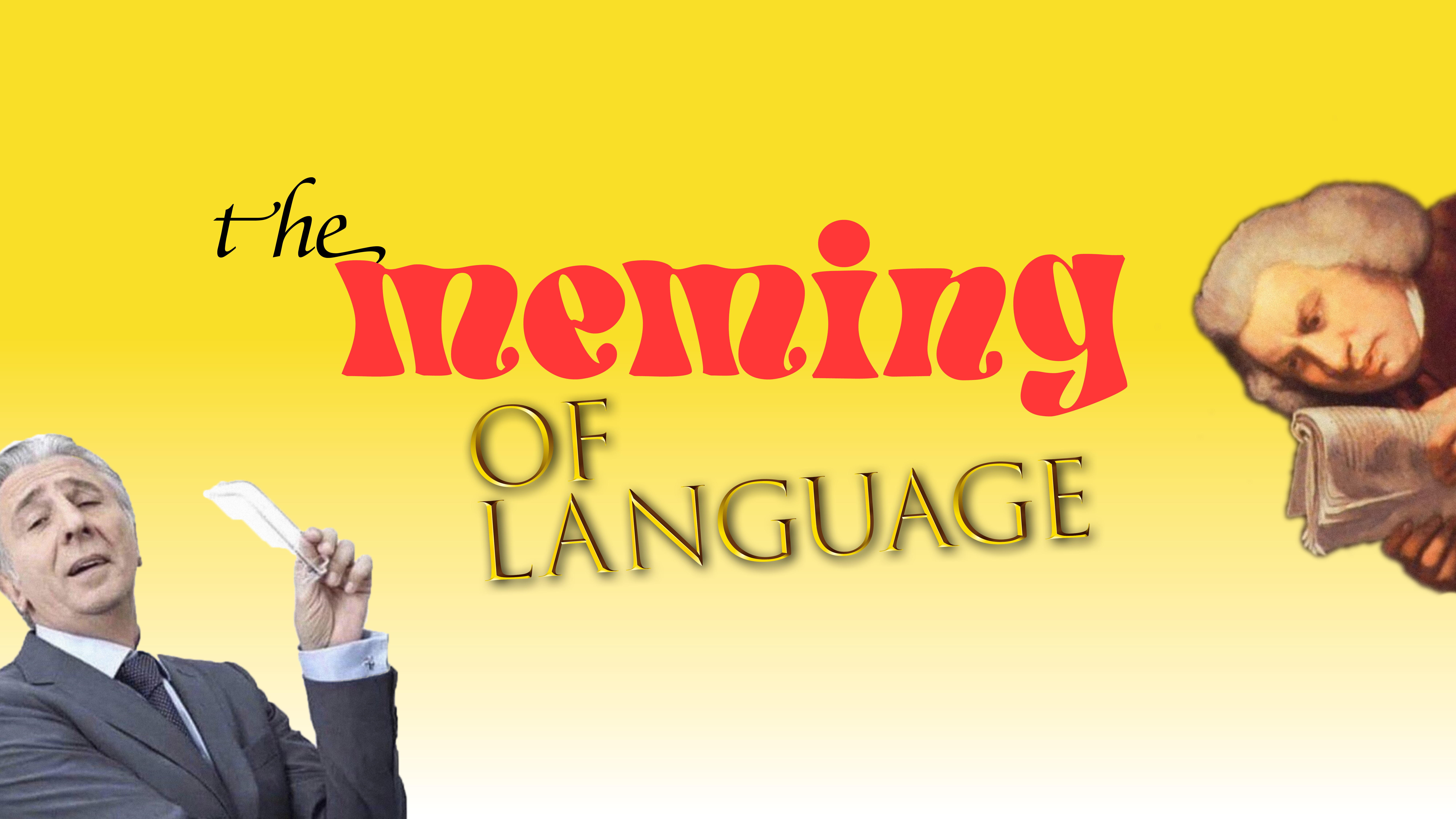
A thesis on memes. That is all.
Category: Research
Class: Graduate Thesis—Spring 2020
Credits: Sean Adams, Samantha Jan Fleming, Kjell Van Sice, Constantin Chopin, Theresa Liu
*The images and/or videos presented here were used strictly for educational purposes and not material gain.
The biggest challenge in dealing with memes in a graphic design thesis was the design of memes themselves. As one of the first steps of research, I sought to learn the purpose behind the design of a meme and the decisions that are made before the meme itself. How do you design something that is inherently “un-designed”?
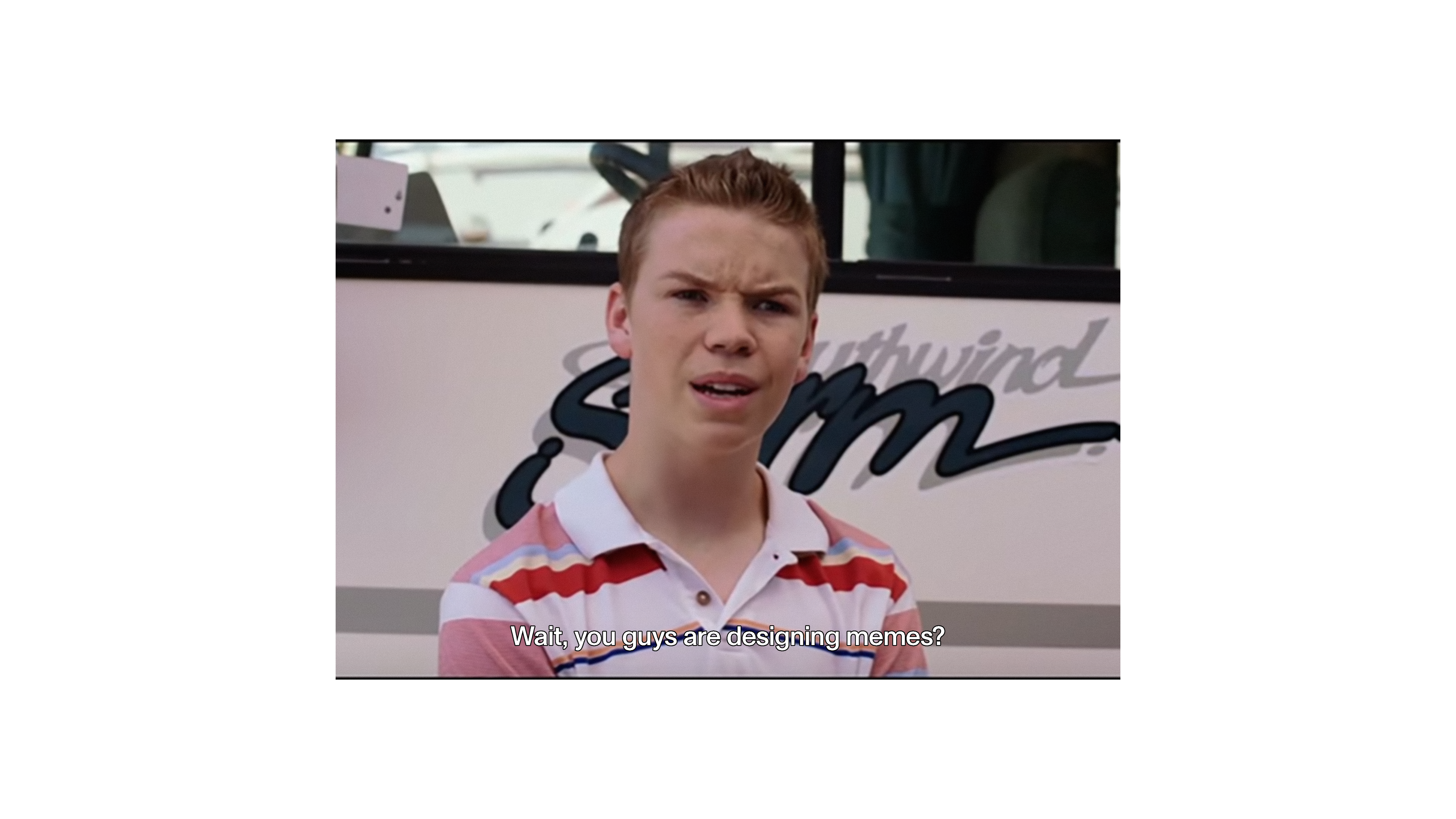
To understand the design of a meme, I broke it down to its basic language structures. A basic sentence is made up of three parts: the subject, the verb, and the object. Similarly, a meme has three parts as well: a reference, a reaction, and a context.
A meme can be translated into a sentence to understand
its parts. Let’s use the meme below as an example.

If the meme is translated into a sentence, it would look something like this:

A part of the project was a process book that contains further breakdowns of my ideas surrounding memes as a language.

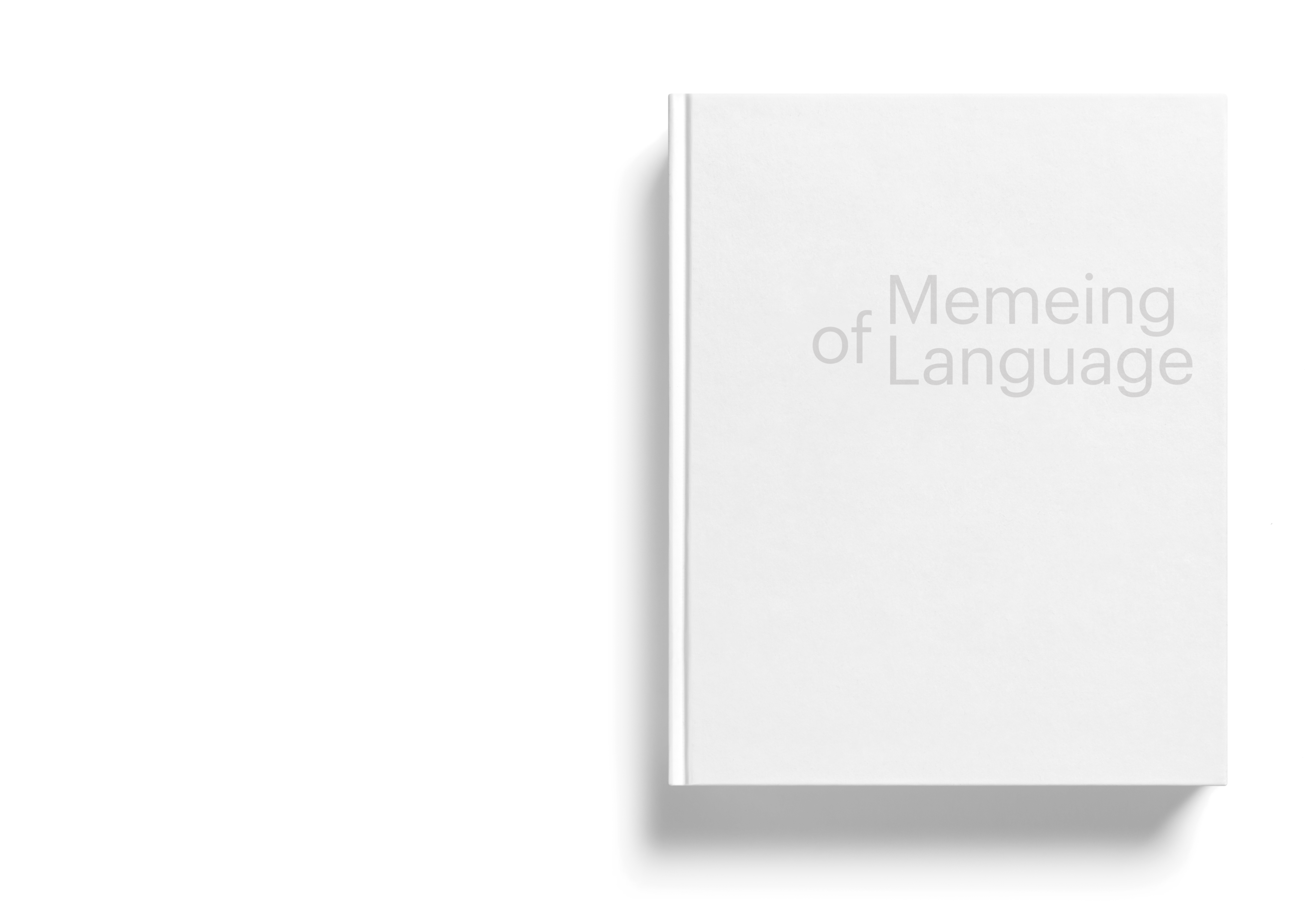
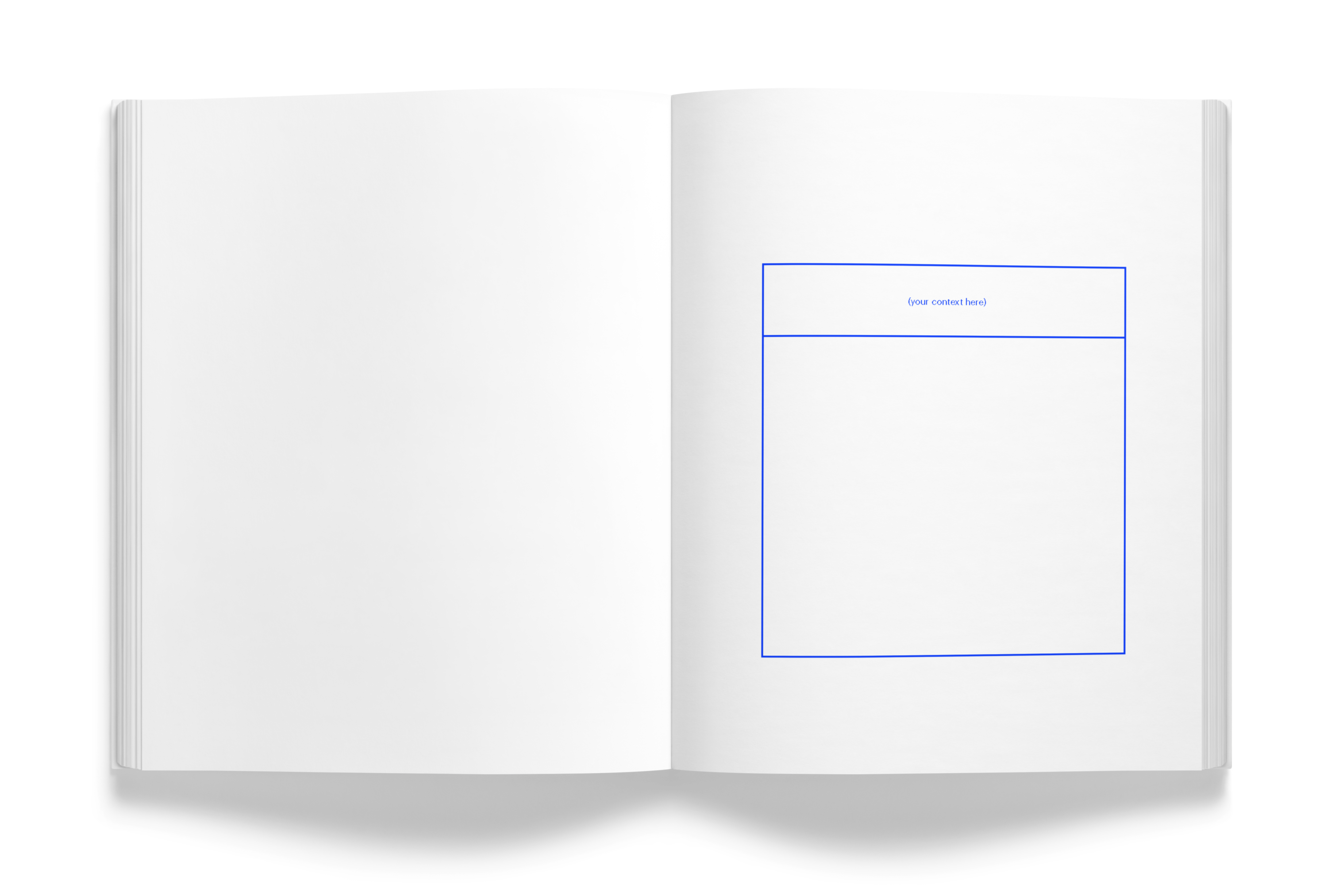
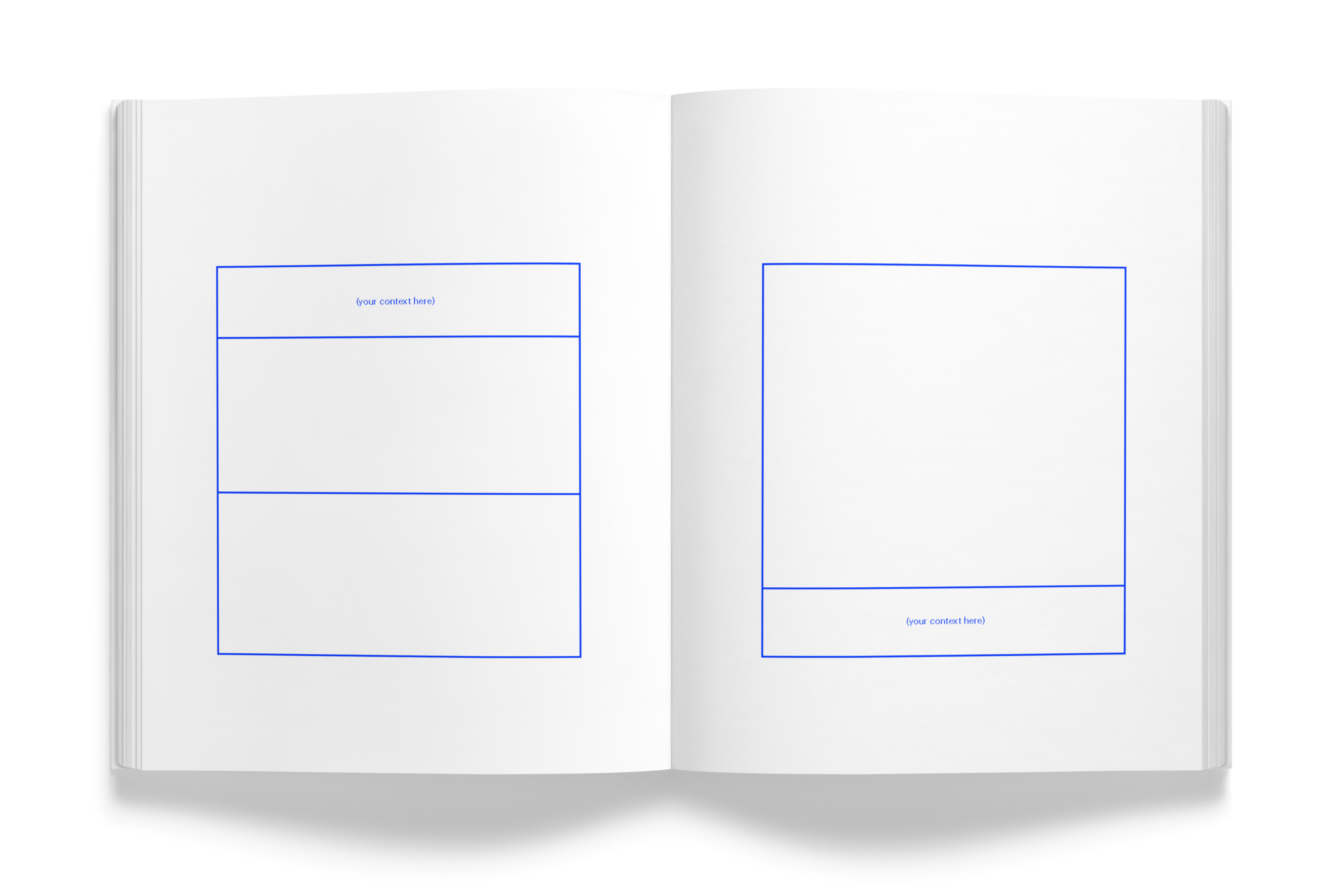
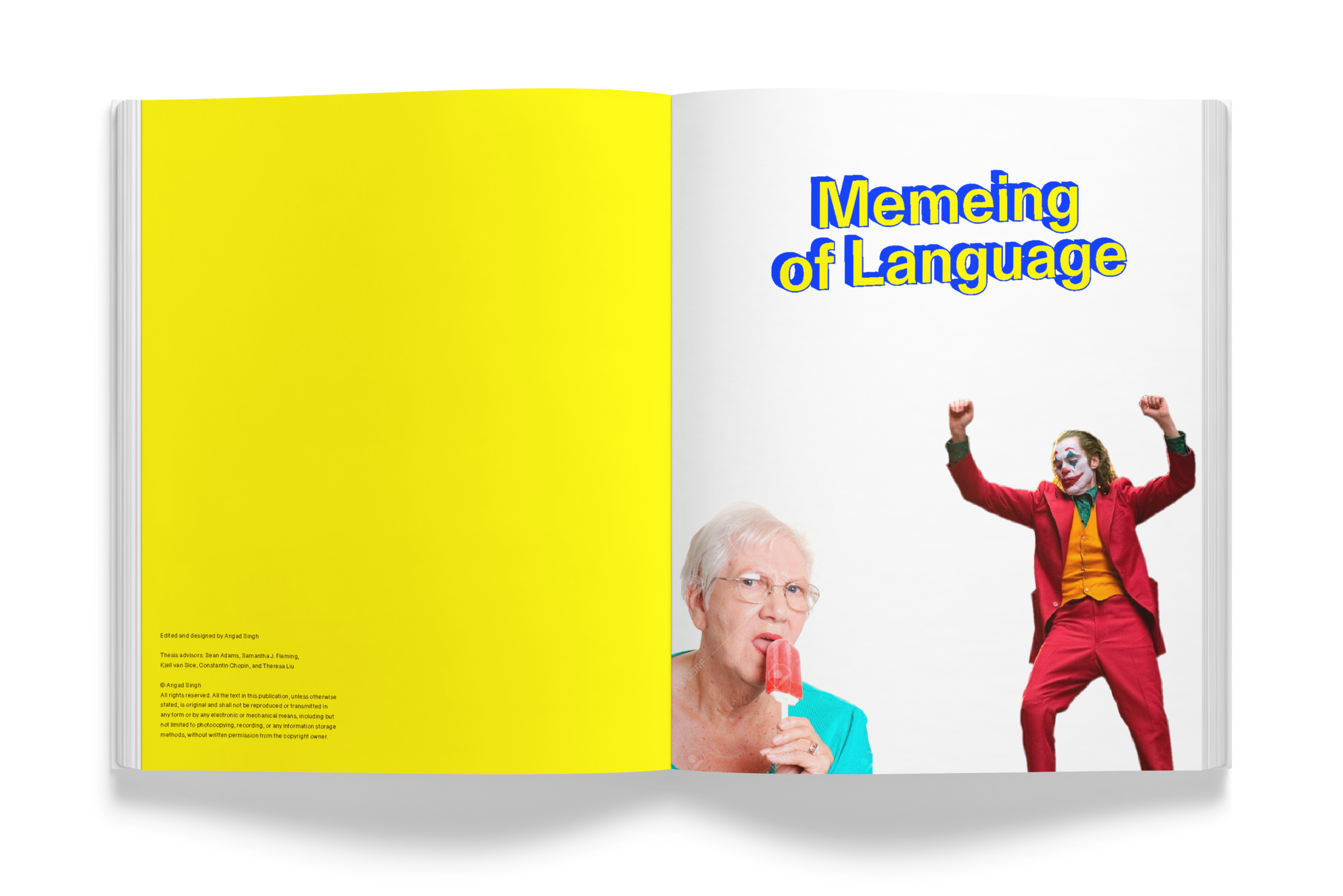
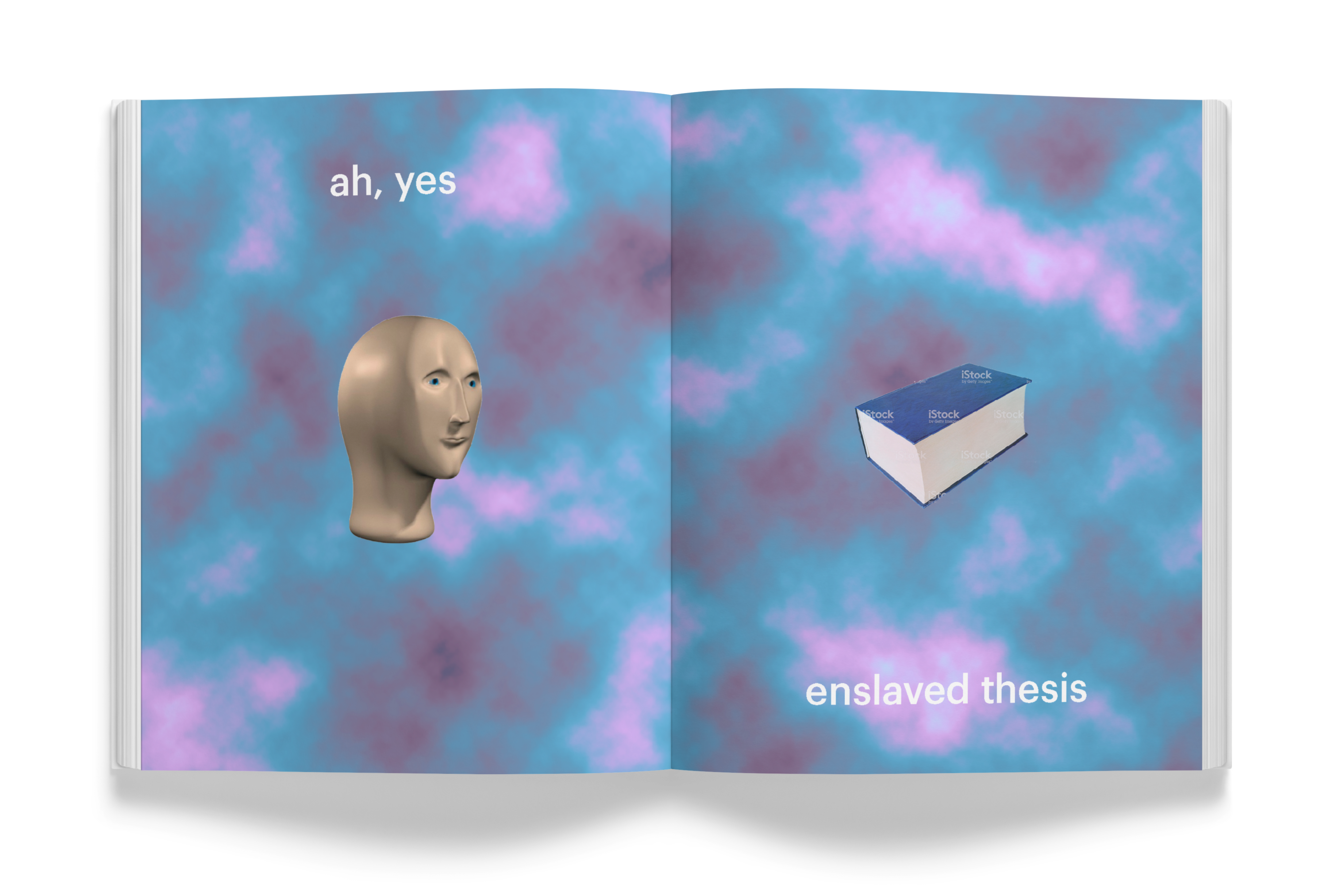

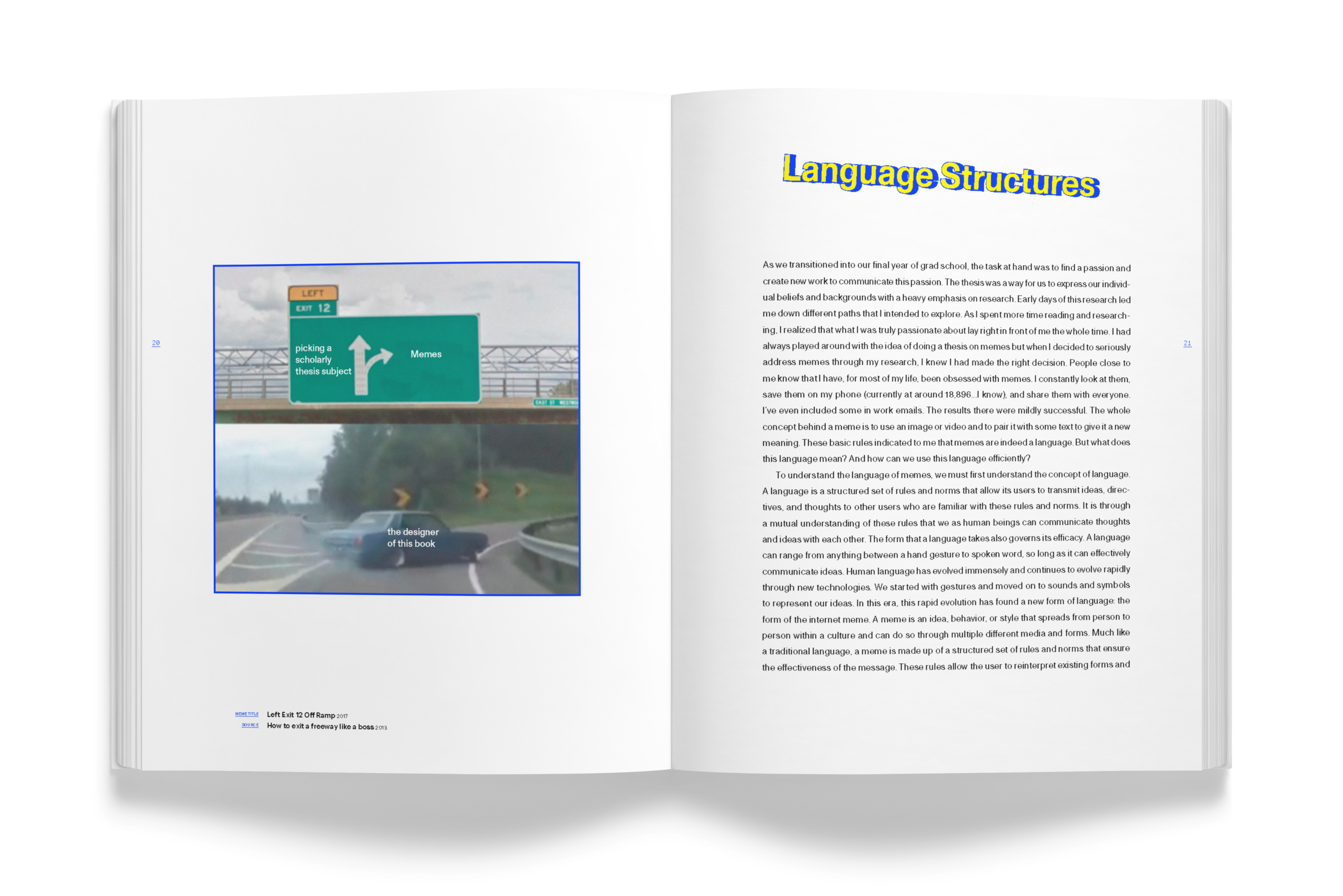

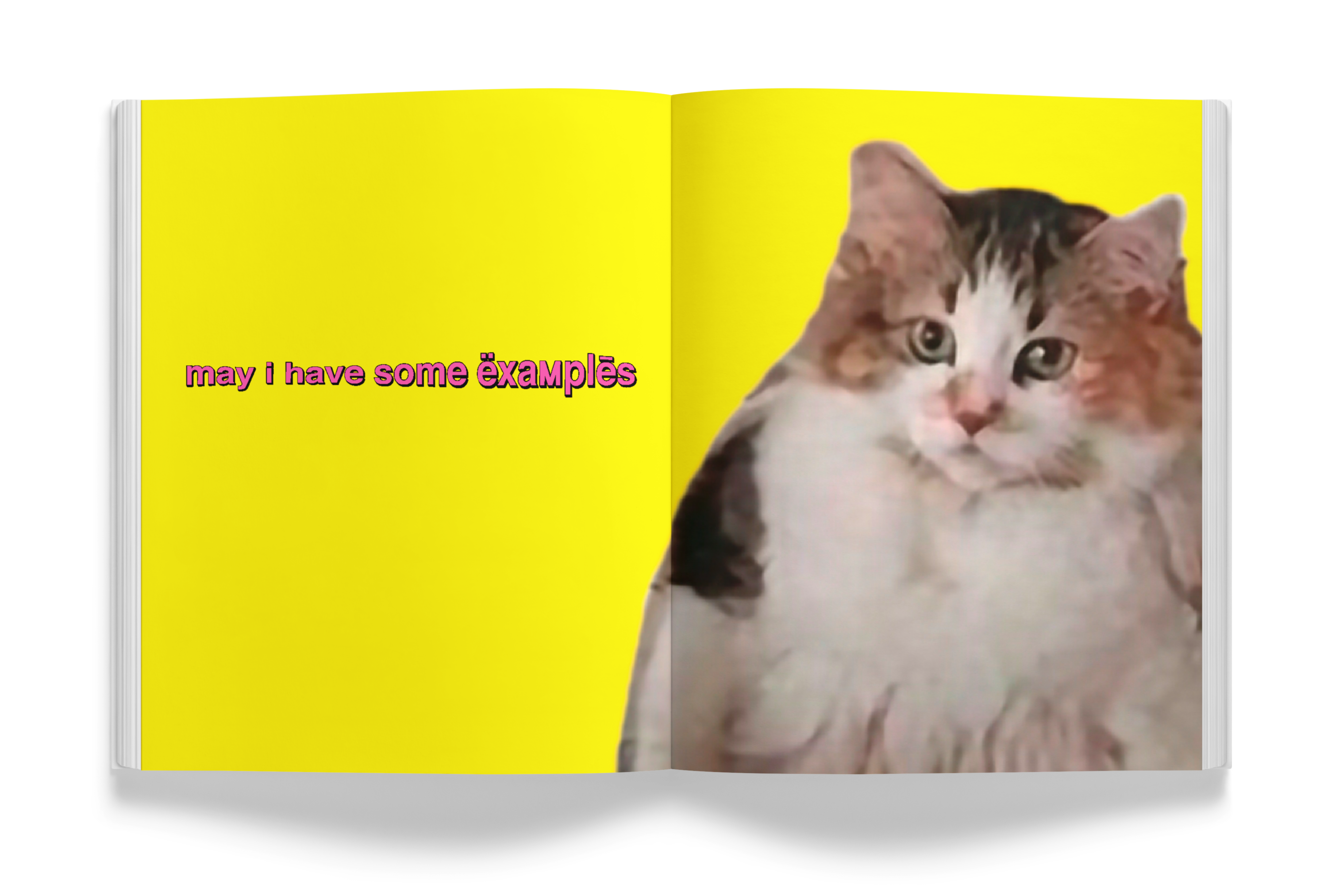

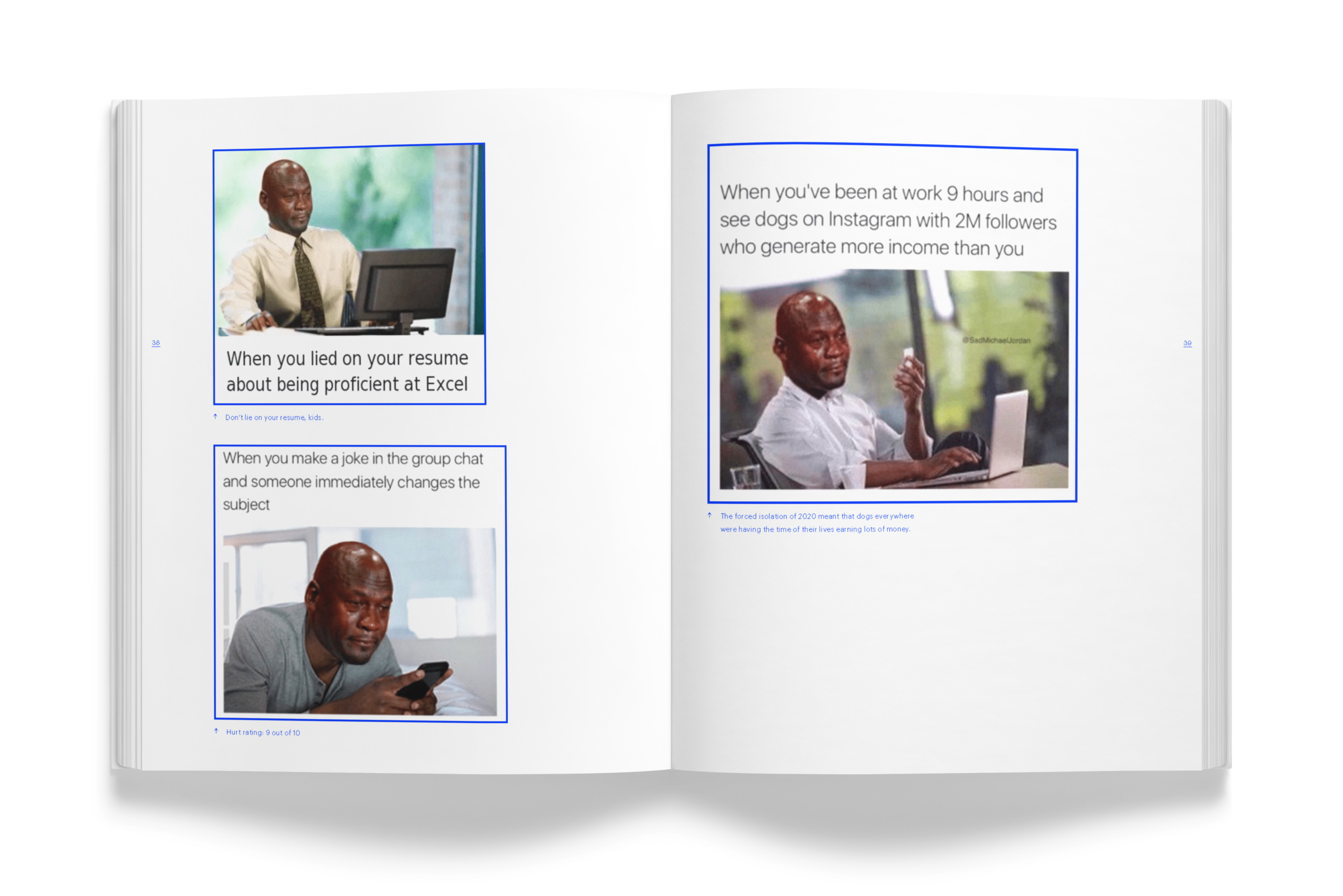

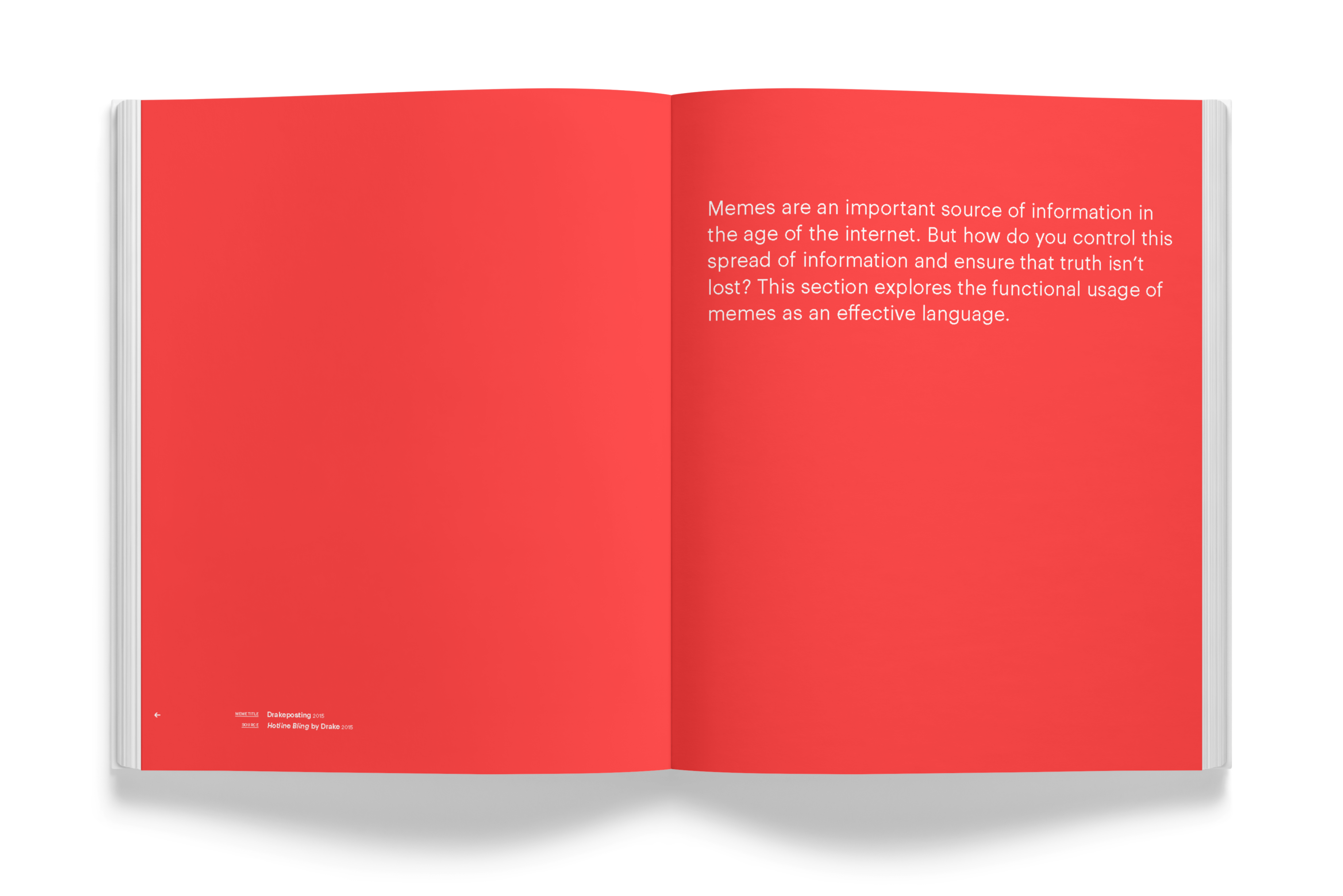

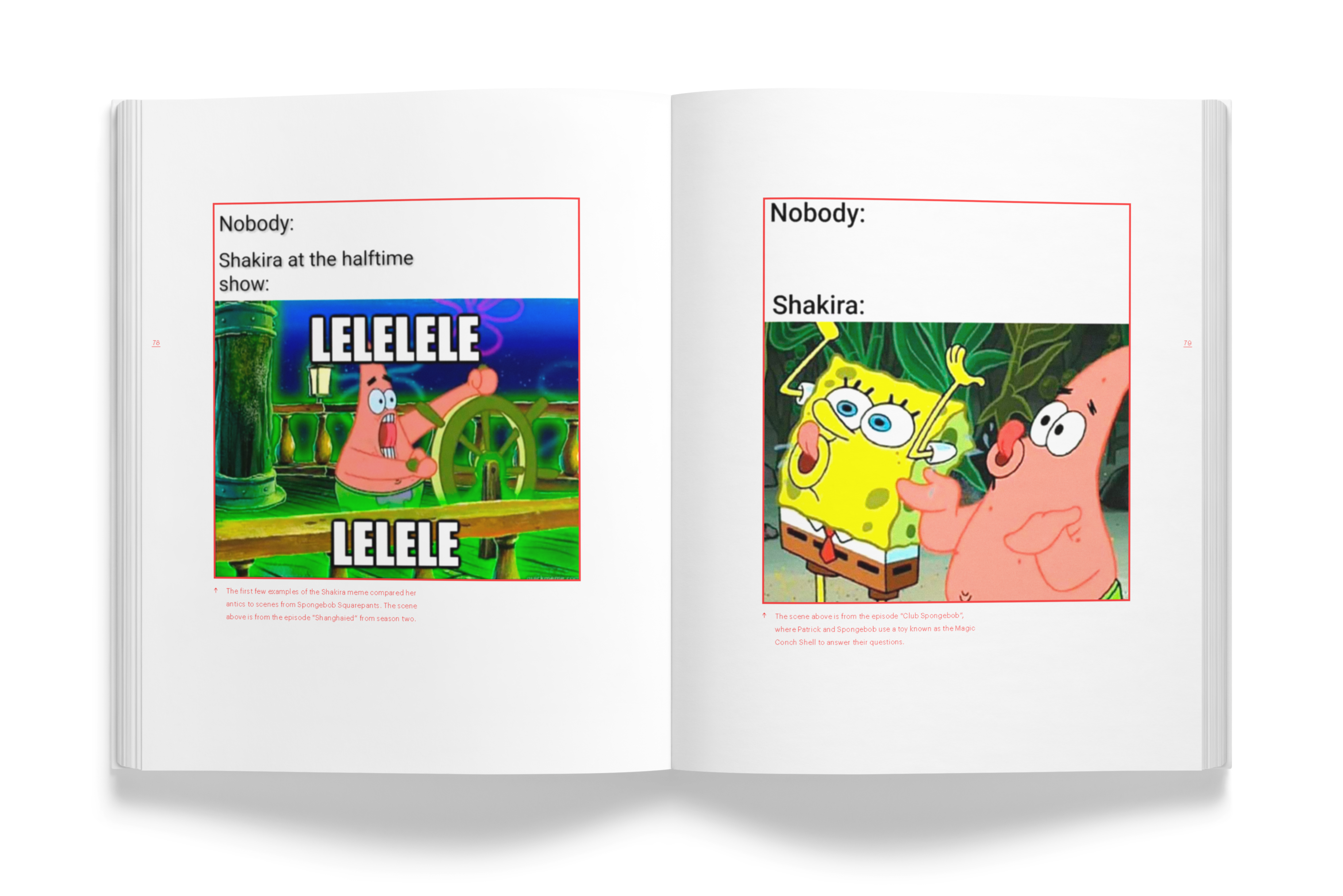
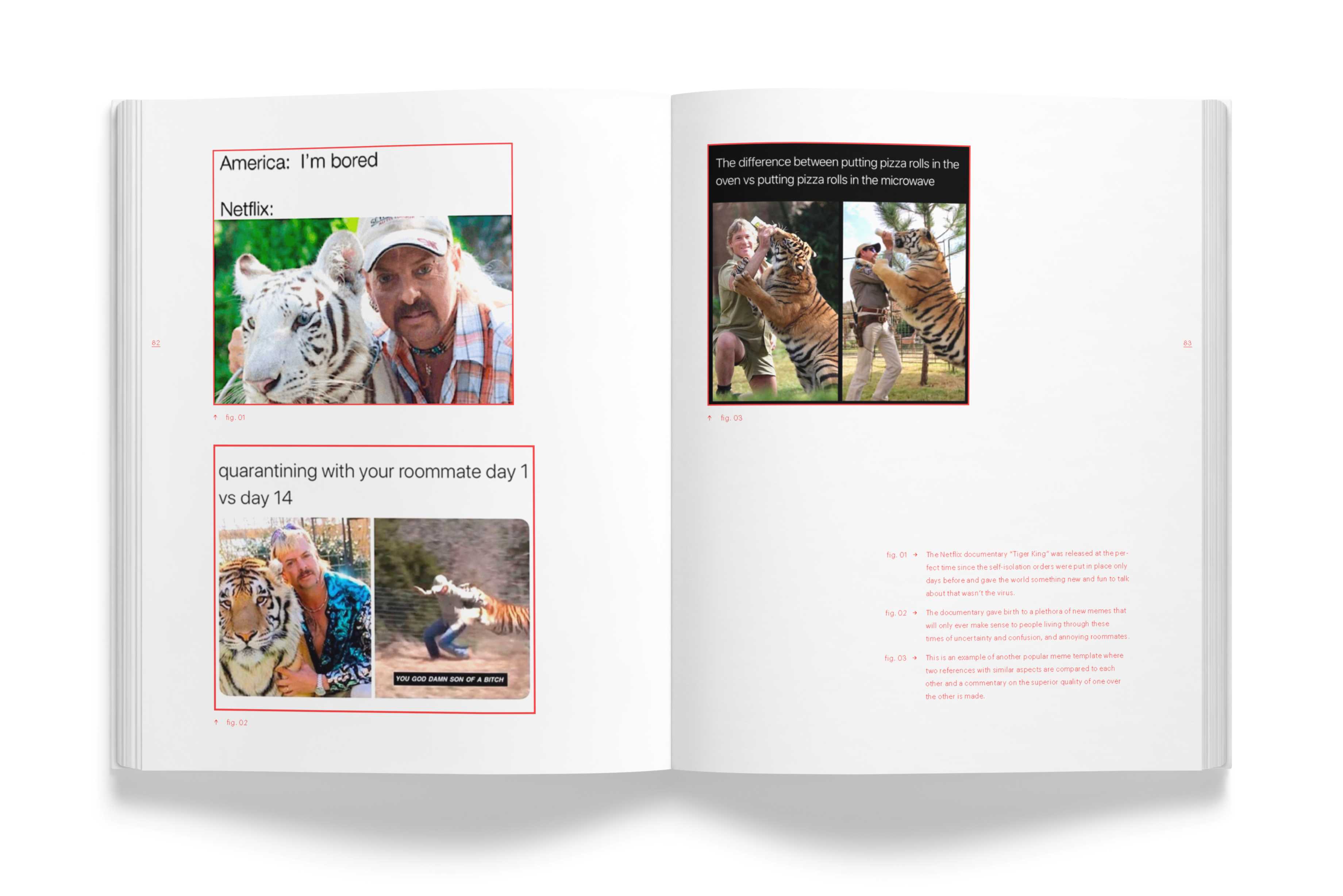
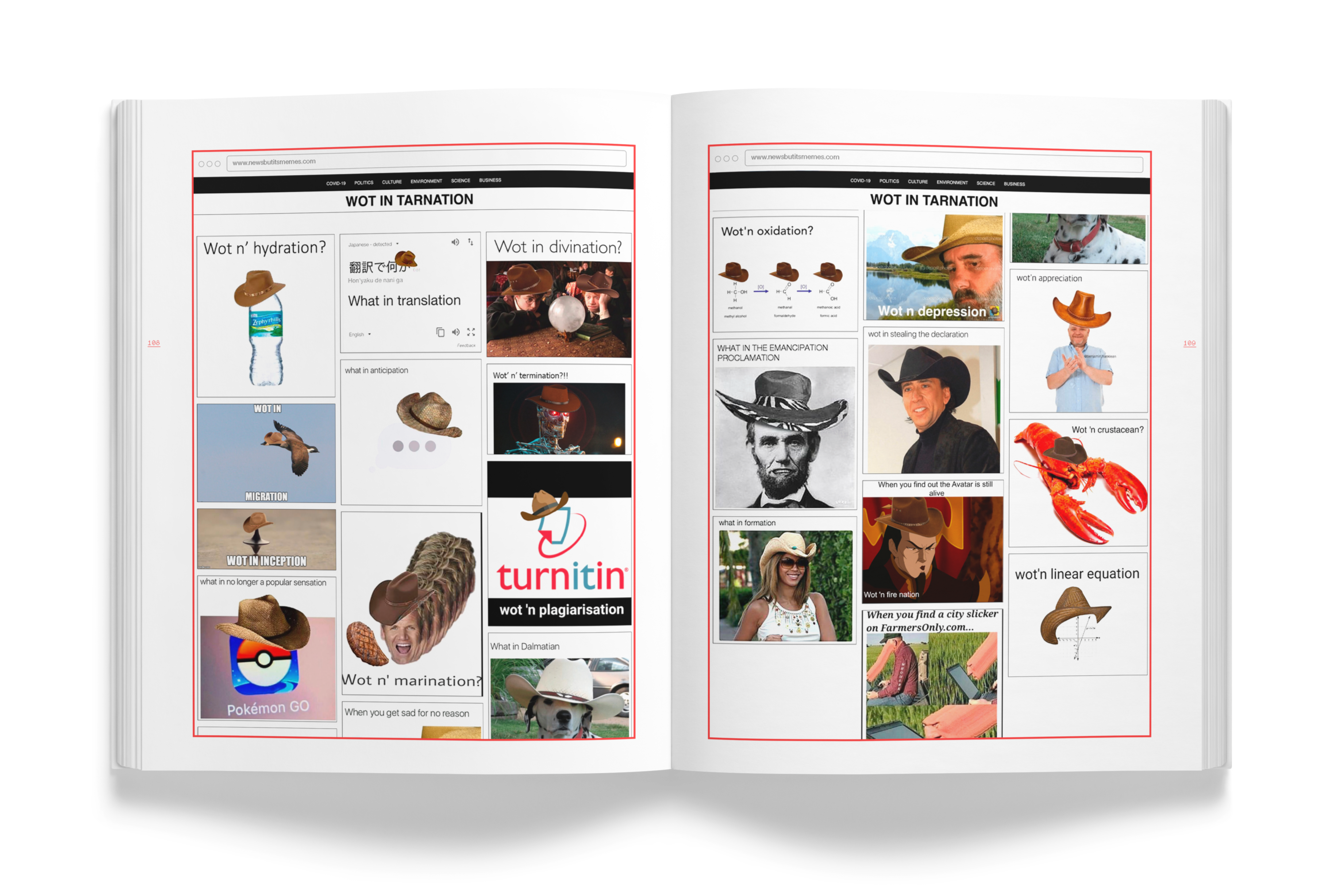
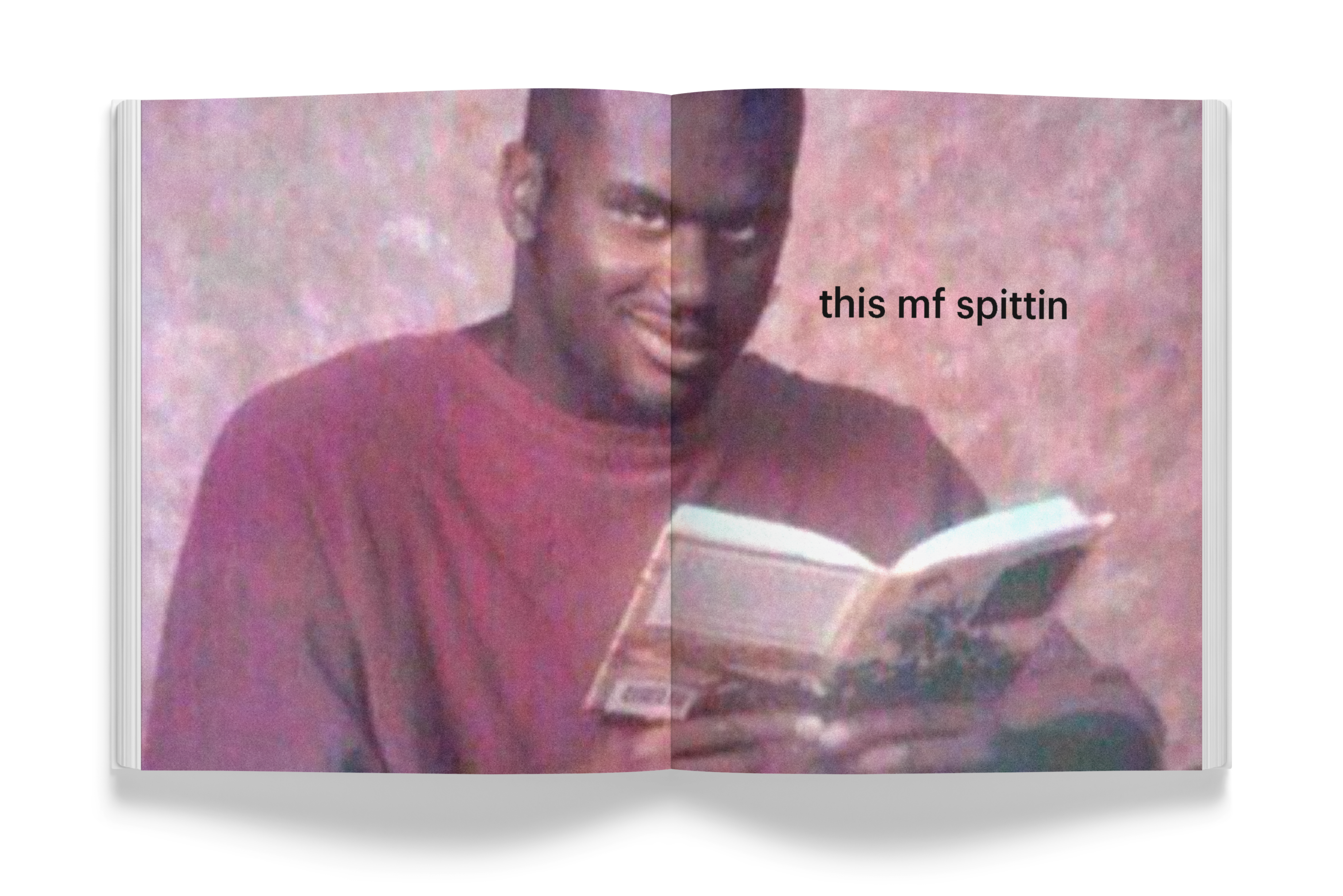
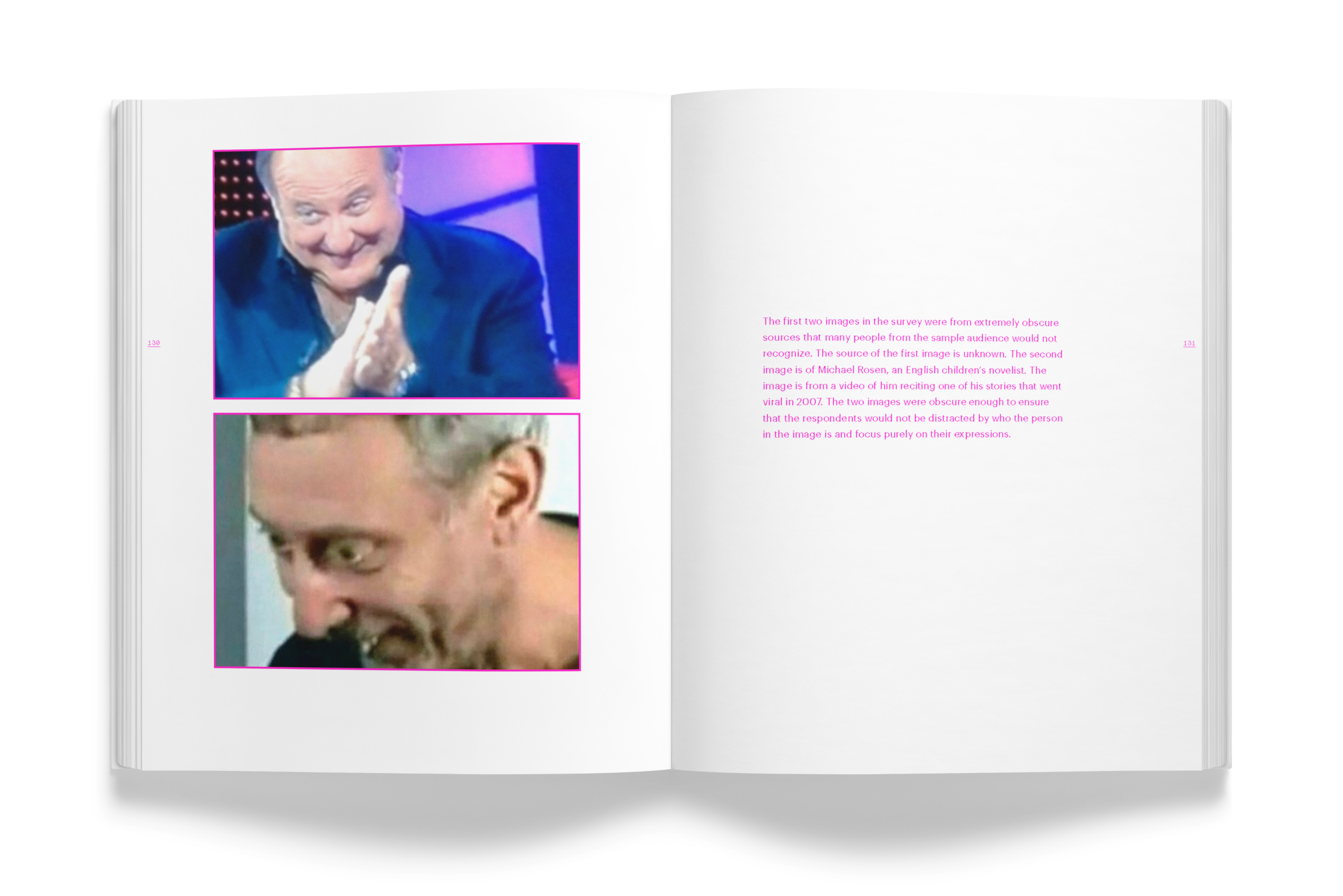
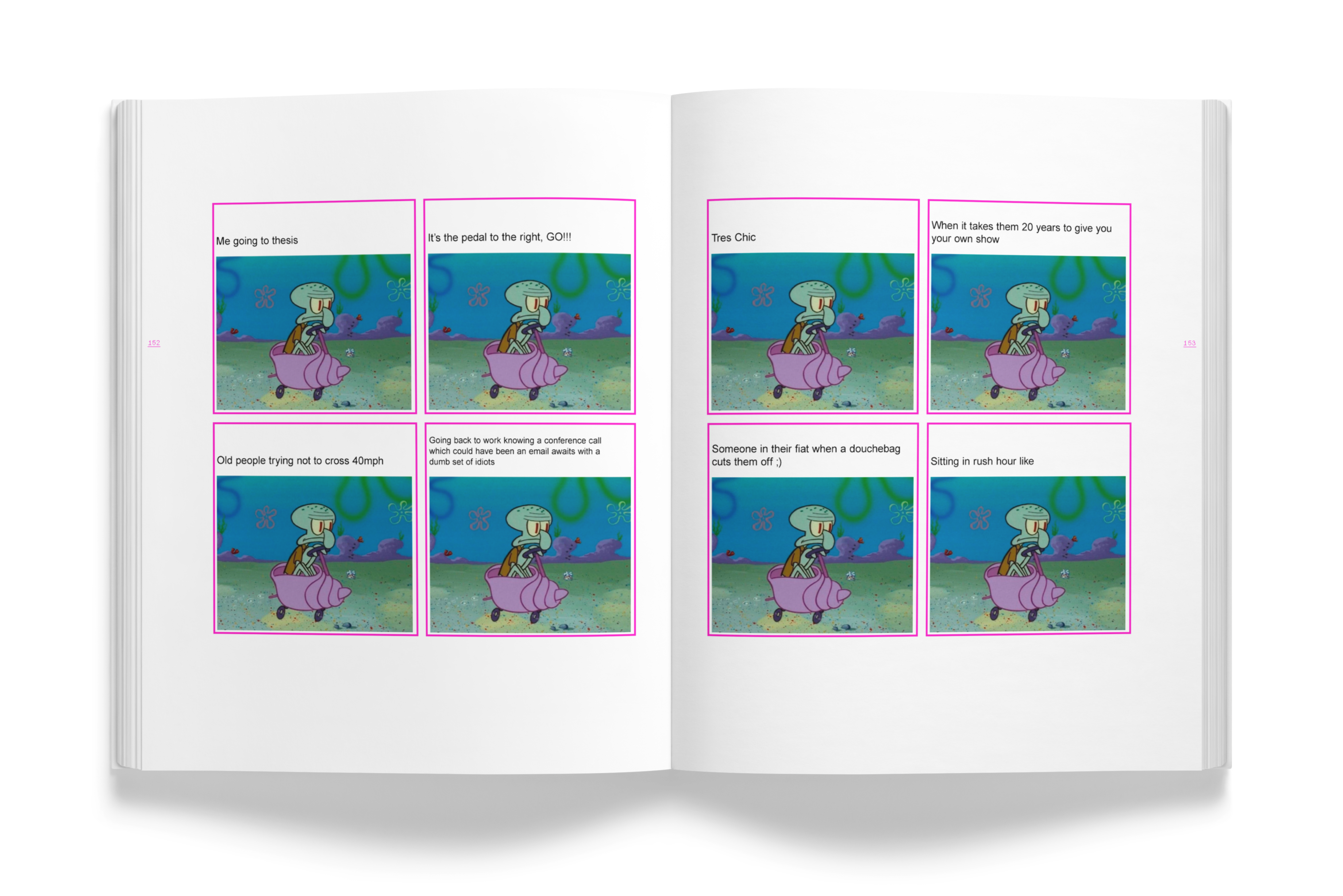

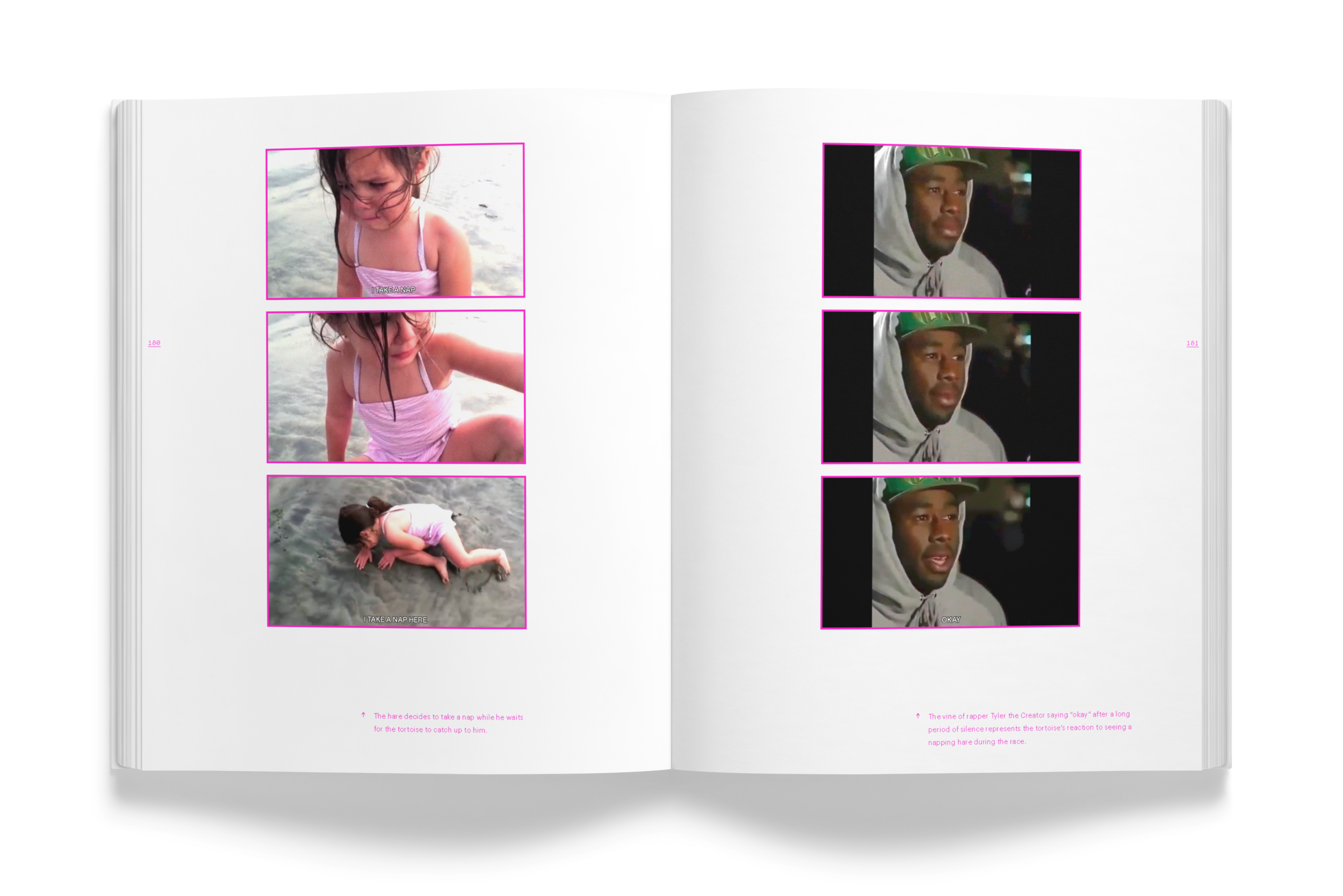
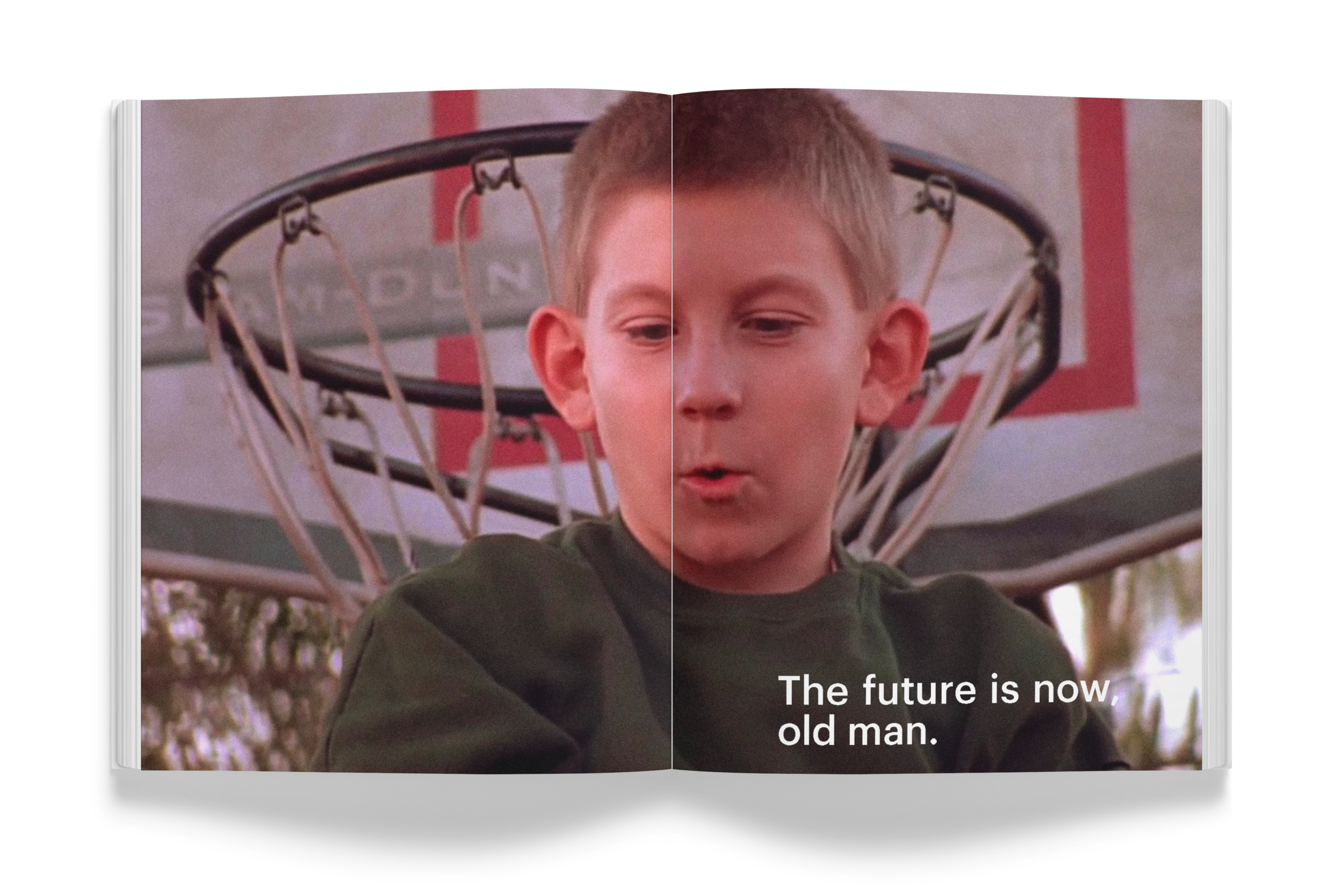
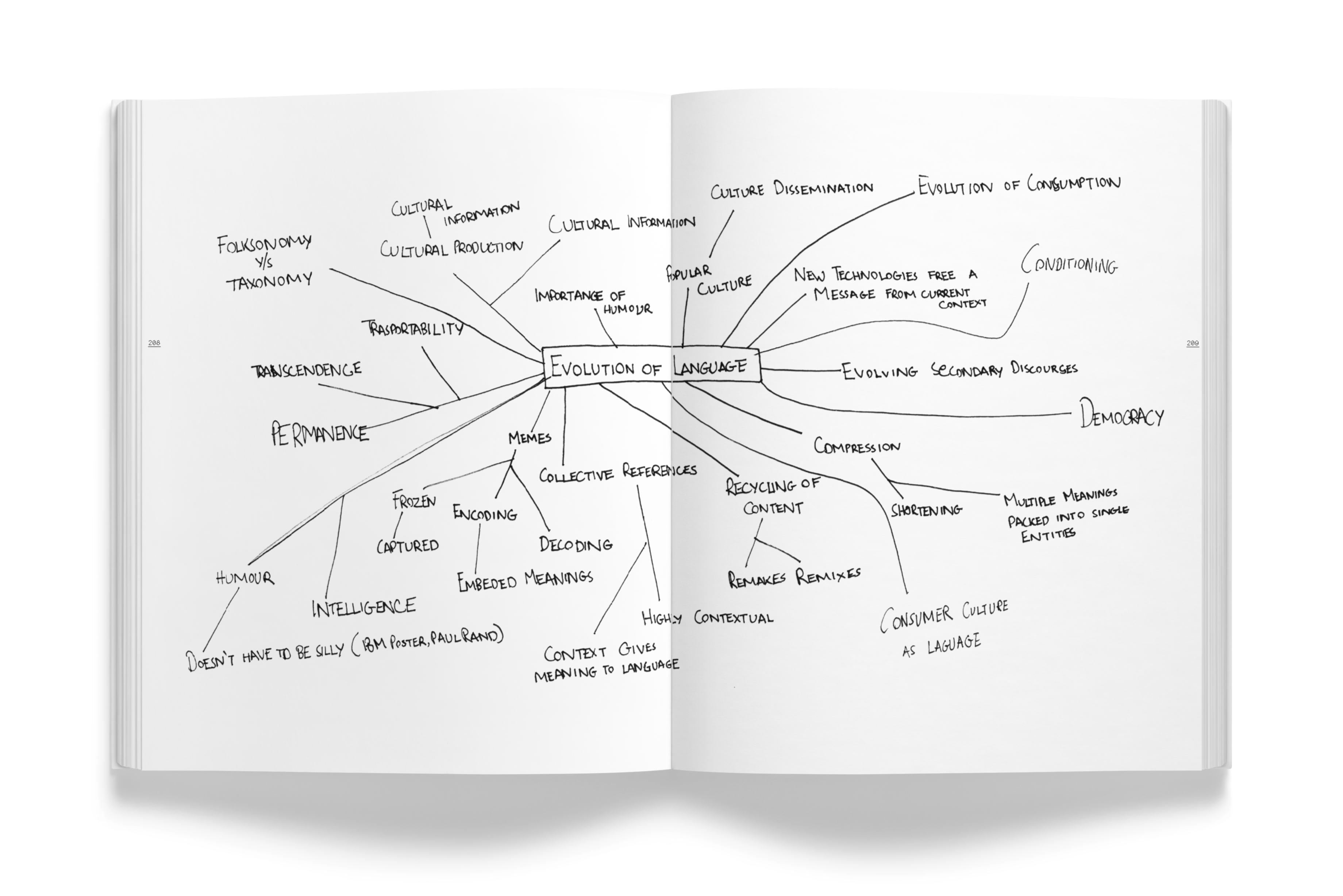

Memes have the ability to compress multiple meanings into
a single form. These forms are simple enough to allow them
to be adapted to different contexts. Each form represents
a reference, or references in some cases, that can be used
to communicate different reactions based on the different
contexts they are used in.
To illustrate this, I created a news website titled “The News But It’s Memes”. The website provided the news through memes, with each story condensing articles into their simplest parts and using memes to communicate the ideas of the story. The
website also translates the memes themselves by giving the reference it comes from and the meaning it stands for.
